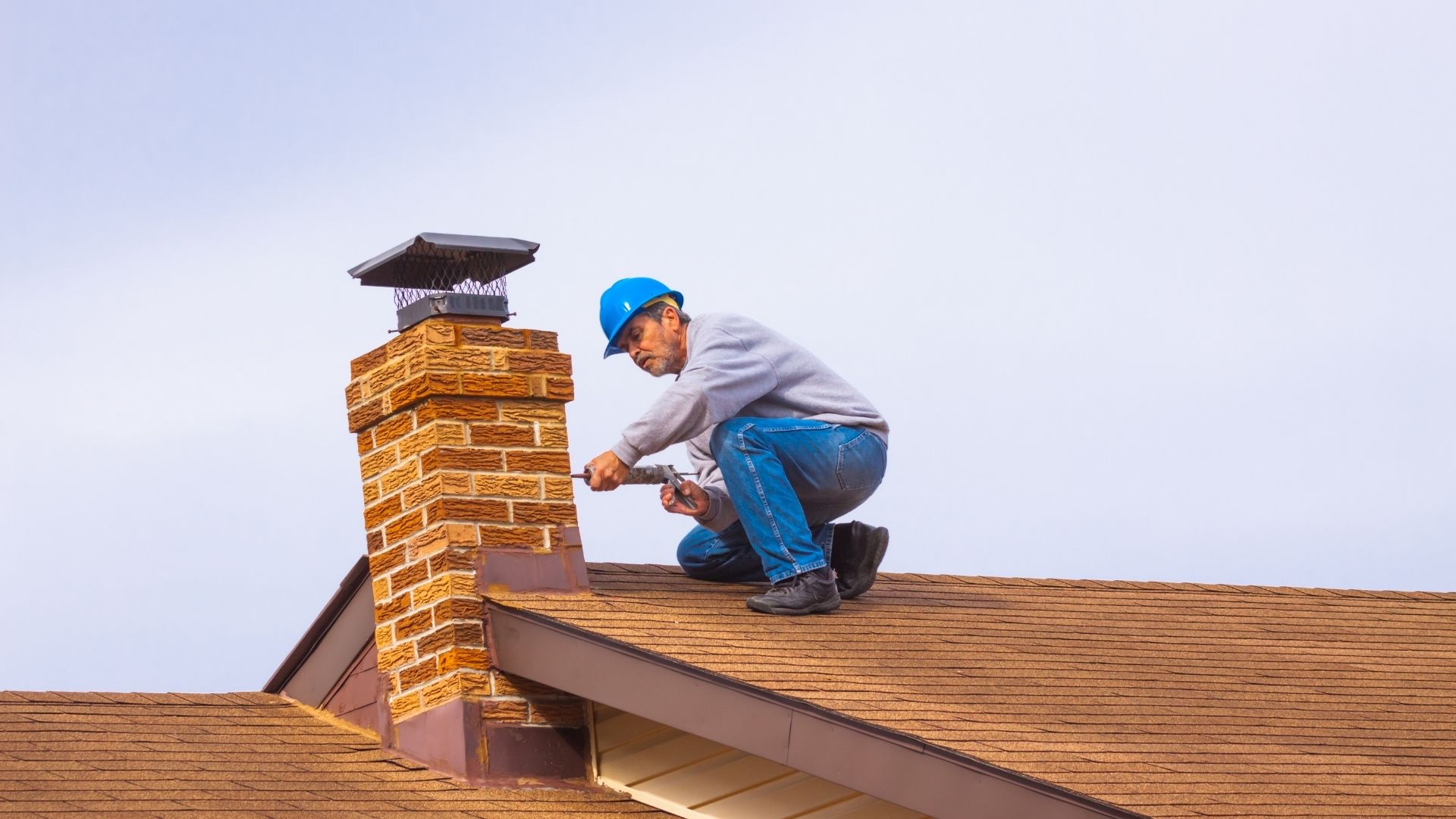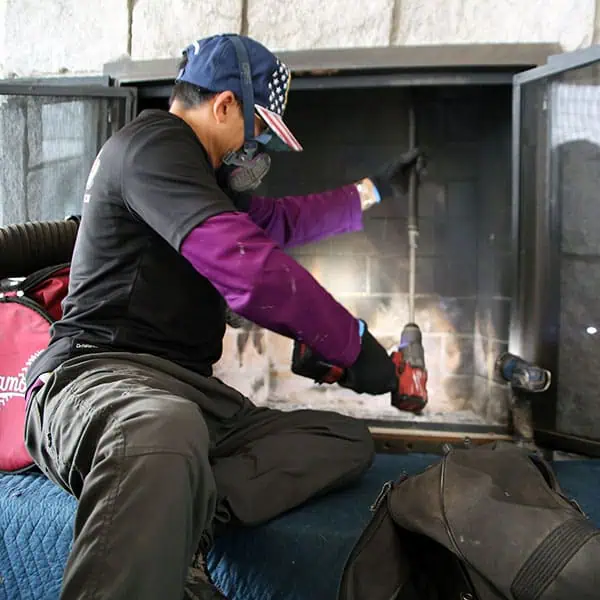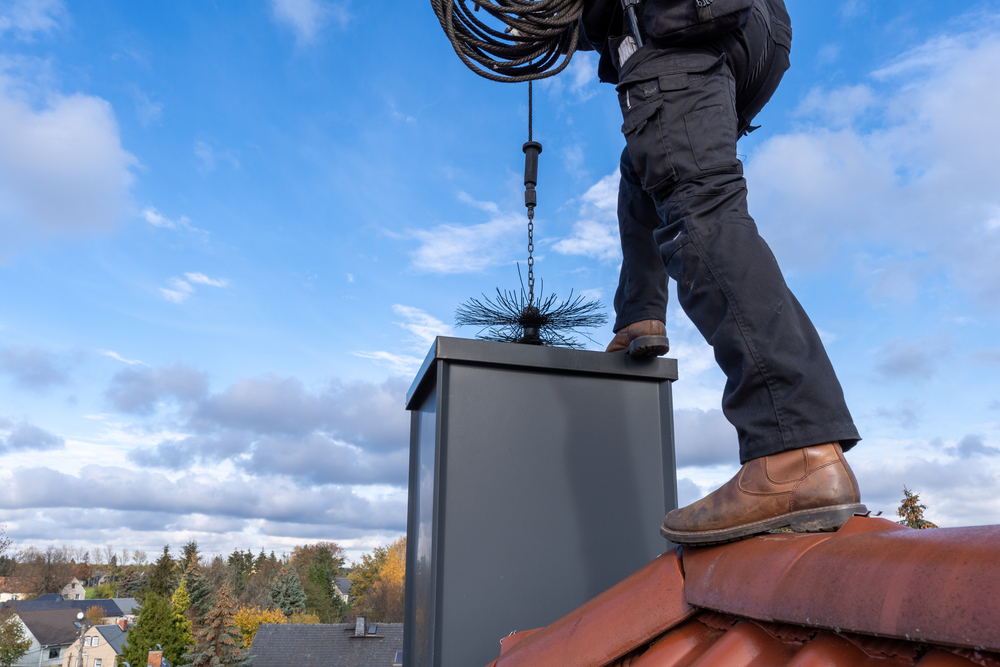Skipping annual fireplace sweeping puts Providence County families at serious risk from creosote fires and carbon monoxide poisoning.
Share:

When you burn wood, smoke containing chemicals and gases travels up your chimney, cooling and collecting along the walls as creosote. This isn’t just harmless residue—it’s a ticking time bomb.
Creosote becomes dangerous with just 1/8 inch of buildup and ignites at only 451 degrees Fahrenheit. Since your fireplace burns at around 1,500 degrees, you’re well above the ignition threshold every time you light a fire. This explains why 90% of chimney fires are caused by creosote buildup.
The problem compounds over time. Each fire adds another layer, and the creosote restricts airflow, creating conditions for even more incomplete combustion and faster buildup.

Creosote doesn’t just appear overnight—it progresses through three increasingly dangerous stages that most homeowners never see coming.
Stage one creosote appears as a dust-like coating that can be removed with basic chimney sweeping. At this point, you’re still safe if you act quickly. Many homeowners mistake this early stage for normal soot and ignore it.
Stage two transforms into black or brown tar flakes that stick to chimney walls and require professional removal. These larger deposits restrict your chimney’s draft, causing smoke and carbon monoxide to re-enter your home while increasing fire risk.
Stage three is when creosote becomes a thick, highly flammable tar coating that only certified chimney sweeps can safely remove. At this stage, a chimney fire is likely to occur. These fires burn explosively at up to 2,000 degrees Fahrenheit, causing cracks in chimney liners and potentially spreading to your home.
The progression from stage one to stage three can happen faster than you think, especially if you burn wet wood or operate your fireplace inefficiently. Most Providence County homeowners schedule chimney cleaning in the fall, but if you’ve been burning regularly, waiting a full year between cleanings puts you at serious risk.
An average of 22,000 chimney fires occur annually in the United States, and the aftermath is devastating. These aren’t small, contained incidents—they’re explosive events that can destroy homes and lives.
Burning debris expelled from chimney tops can ignite other parts of your home, while the intense heat passes through masonry and overheats nearby combustible materials. The heat from chimney fires is so intense it can crack masonry, warp metal liners, and cause structural damage.
Even if the fire stays contained within the chimney, the damage is often irreversible. Chimney fires burn away creosote but leave cracks in flue tiles that allow smoke and carbon monoxide to leak into your home during future fires. What seems like a “minor” chimney fire often means complete system replacement.
Providence County’s historic homes face particular risk. Older chimneys may lack proper liners or have deteriorated mortar that can’t withstand the extreme temperatures. New England’s harsh weather—wind, rain, ice, and temperature fluctuations—already weakens mortar over time, and a chimney fire can cause complete structural failure.
The financial cost is staggering. While annual chimney sweeping costs a few hundred dollars, rebuilding after a chimney fire can run $15,000 or more. That doesn’t include damage to your home’s interior, personal belongings, or the trauma of a house fire.
Over 430 Americans die annually from unintentional carbon monoxide poisoning, and blocked chimneys are responsible for many of these fatalities. Unlike smoke, carbon monoxide is completely undetectable without proper equipment.
You cannot see or smell carbon monoxide, but high levels can kill in minutes. Carbon monoxide is frequently called the “silent killer” because people are often overtaken before realizing what’s happening. Known as “The Silent Killer,” carbon monoxide is odorless, tasteless, invisible, and symptomless to the point that victims can find it impossible to escape.
Most blockages aren’t visible from inside your home or fireplace, and you’re unlikely to see obstructions high up in the chimney structure. When chimneys are blocked, carbon monoxide and other toxins flow back down into your living space instead of venting safely outside.

When chimney cleaning is neglected, excessive creosote buildup can completely block the flue, preventing combustion gases from escaping and forcing toxic fumes into your home. But creosote isn’t the only culprit.
Bird nests restrict airflow and create smoke problems, and if the nest falls, it becomes extremely flammable, creating additional fire hazards. Leaves, debris, and even small animals can create dangerous blockages. These blockages often occur high up in the chimney where they’re impossible to see from ground level.
Oversized flues also create carbon monoxide risks. Many fireplace inserts are smaller than the original chimney, and when installed in chimneys that are too large, they don’t function at optimal levels, creating conditions where carbon monoxide can enter your home more easily.
Carbon monoxide poisoning can occur from dirty chimneys, animal nests, blockages, damaged flue liners, or other fireplace damage. The symptoms mimic other illnesses, making poisoning difficult to detect. Symptoms are often described as “flu-like,” but people who are sleeping or incapacitated can die before experiencing symptoms. The elderly and those with chronic conditions face especially high risk.
What makes this particularly dangerous in Providence County is that winters can be harsh, and if your chimney isn’t working properly, you risk smoke damage, dangerous fumes, and higher energy bills. Families often seal up their homes tightly during cold weather, trapping any carbon monoxide that leaks from blocked chimneys.
Smoke entering your living space when using your fireplace is a serious issue requiring immediate attention, indicating a blockage or restriction preventing proper gas ventilation. But many warning signs are far more subtle.
A weak or inconsistent draft indicates your chimney may be obstructed or suffering from creosote buildup. When the draft is compromised, it leads to improper ventilation and increased carbon monoxide risk. You might notice your fires don’t burn as well as they used to, or they’re harder to start.
Strong, unpleasant odors from your fireplace can indicate creosote or combustible material buildup. As these materials heat up during combustion, they release acrid smells that serve as an early warning system. Don’t dismiss these odors—they’re alerting you to potential hazards.
Soot accumulation inside your fireplace or on the hearth indicates malfunction. Soot results from incomplete combustion and can quickly build up, obstructing gas flow and contributing to carbon monoxide buildup. Unusual sounds like hissing or cracking indicate blockages or structural problems that can force gases back into your living space.
Many people have small chimney fires they don’t know about but see evidence later, including discolored rain caps, cracked tiles, creosote flakes on the ground, and damaged masonry. If you notice any of these signs, your chimney needs immediate professional attention.
The Chimney Safety Institute of America recommends annual chimney cleaning and maintenance by certified sweeps as the best way to clear obstructions and reduce fire risk while ensuring efficient fireplace operation. This isn’t just a recommendation—it’s essential for your family’s safety.
Professional chimney sweeps remove all creosote and soot deposits that could block your flue, and they inspect your chimney liner to ensure it’s not damaged. When they find blockages, they remove them to reduce risks of chimney fires and carbon monoxide leaks. The National Fire Protection Association recommends annual inspections, and professional sweeps can identify potential issues before they become serious hazards.
Professional sweeping goes beyond just cleaning. Expert chimney sweeps remove creosote, soot, and flammable debris to reduce chimney fire risk while improving airflow, fireplace efficiency, and indoor air quality. They can spot problems you’d never see and prevent the progression from minor issues to life-threatening dangers.
For Providence County homeowners, professional service is particularly crucial. We understand the complexity of Providence homes—from historic brick chimneys to newer gas fireplaces—and bring expertise for both routine maintenance and complete rebuilds. When you need reliable chimney care that protects your family and your investment, trust Above and Beyond Chimney to deliver the thorough, professional service your home deserves.
Article details:
Share: